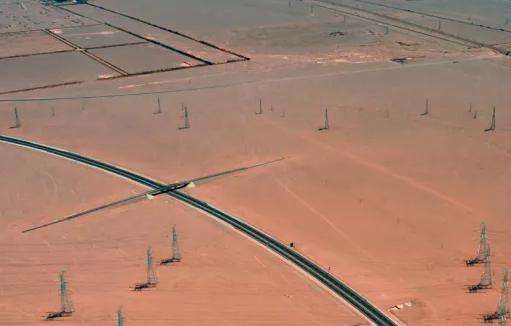1. Open circuit voltage
Open circuit voltage UOC: That is, the solar cell is placed under AM1.5 spectrum conditions and a light source intensity of 100mW/cm2. the ends are open circuit, the output voltage value of the solar cell.
2. Short circuit current
ISC short circuit current: When the solar cell is exposed to AM1.5 spectrum conditions and a light source intensity of 100 mW/cm2, and the end output is short-circuited, the current value flowing through both ends of the solar cell.
3. Maximum output power
The operating voltage and current of the solar cell change with the load resistance. Plot the operating voltage and current values corresponding to different resistances. values. Obtain the volt-ampere characteristic curve of the solar cell. If the resistance valuee selected load can maximize the product of output voltage and current, the maximum output power can be obtained, represented by the symbol Pm. The working voltage and working current at this time are called optimal working voltage and optimal working current, which are represented by the symbols Um and Im, respectively.
4. Fill factor
Another important parameter of solar cells is the fill factor FF (fill factor), which is the ratio of the maximum output power to the product of the open circuit voltage. and short circuit current.
FF: It is an important indicator for measuring the output characteristics of solar cells. It represents the characteristics of the maximum power that a solar cell can produce when supporting the optimal load. the output power of the solar cell. The value of FF is always less than 1. The resistorss series and parallel have a greater impact on the fill factor. The larger the series resistance, the lower the short-circuit current and the lower the fill factor; the smaller the parallel resistance, the greater the partial current, which leads to a decrease in the open circuit voltage and the greater the filling. the factor decreases a lot.
5. Conversion Efficiency
The conversion efficiency of a solar cell refers to the maximum energy conversion efficiency when the optimal load resistance is connected to the external loop. It is equal to the output. power of the solar cell and the incident solar energy. The ratio of energy to battery surface area. The photoelectric conversion efficiency of solar cells is an important parameter for measuring the quality and technical level of the battery. It is linked to the structure, to the characteristics of the rushtion, material properties, operating temperature, damage from radioactive particles and environmental changes to the battery.
The similarities and differences between the dark volt-ampere characteristics of solar cells and the volt-ampere characteristics of general diodes
The aim of this experiment is to understand the principle operation and measurement of solar cells. Volt-amperage characteristics of solar cells and evaluation of solar cell efficiency.
1. Understand the working principle of solar cells: Through experiments, you can gain an in-depth understanding of how solar cells convert light energy into electrical energy and their internal working mechanisms.
2. Measuring the volt-ampere characteristics of solar cells: by measuring the relationship of voltage and coWhen viewing solar cells under different lighting conditions, we can understand their volt-ampere characteristics, which is an important indicator for evaluation. the performance of solar cells.
3.Estimation of solar cell efficiency: Through experiments, the conversion efficiency of solar cells can be calculated, which is the ratio between the electrical energy generated per unit time and the incident light energy. This is an important indicator for evaluating the performance of solar cells. .
Uniformity: When a forward voltage is applied, the forward voltage is very small in the initial part and the forward current is almost zero. This section is called the dead zone. When the forward voltage is greater than the dead zone voltage, the electric field in the P-N junction is overcome, the diode and solar cell conduct forward, and the current increases rapidly asthat the voltage increases when the applied reverse voltage does not exceed. Within a certain range, the reverse current will be very large. General solar cells and diodes are in a cut-off state. When the applied reverse voltage exceeds a certain value, the reverse current will increase suddenly, that is, breakdown.
Difference: In addition to overcoming the reverse internal electric field after the P-N junction is biased, the reverse breakdown voltage of the solar cell must also overcome the difference in equivalent electromotive force, hence the breakdown voltage absolute inverse of the solar cell is The value is greater.














